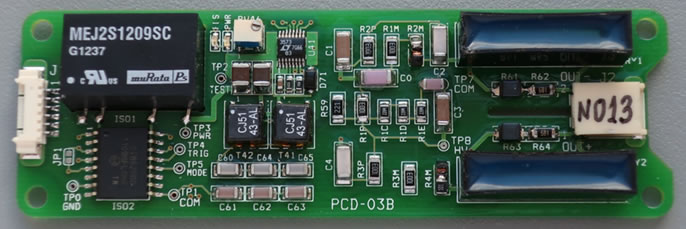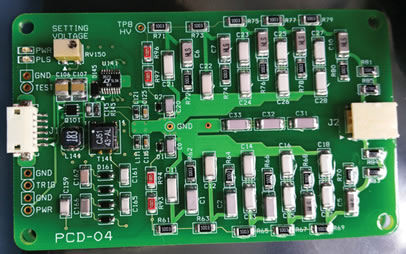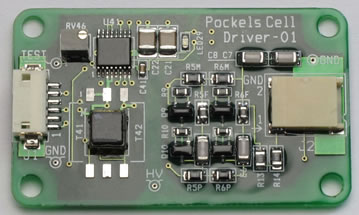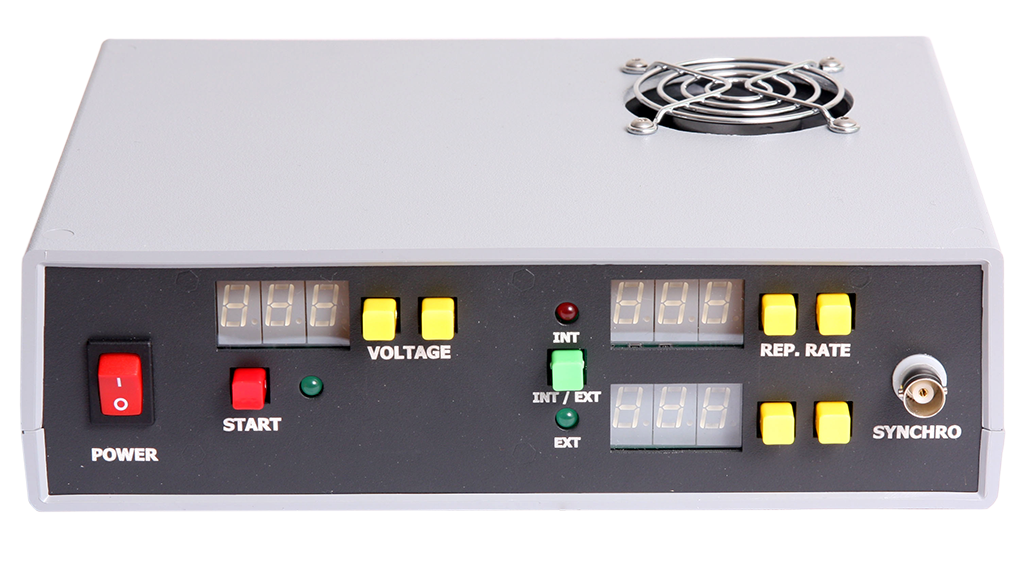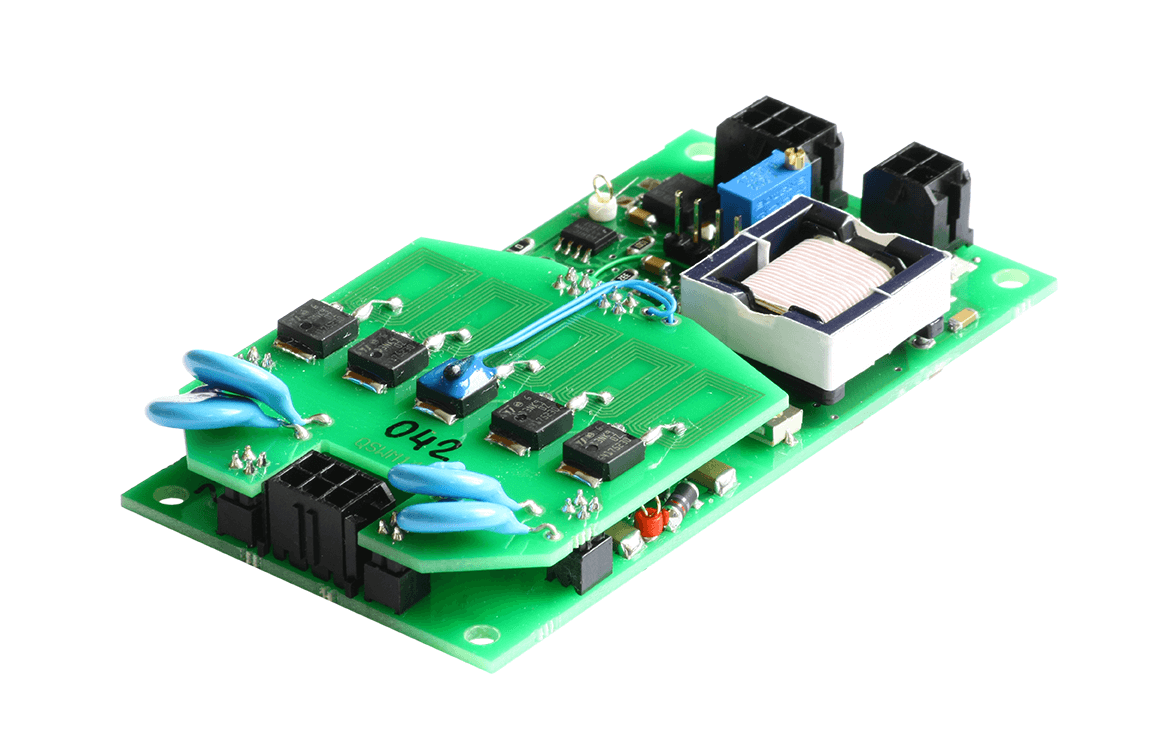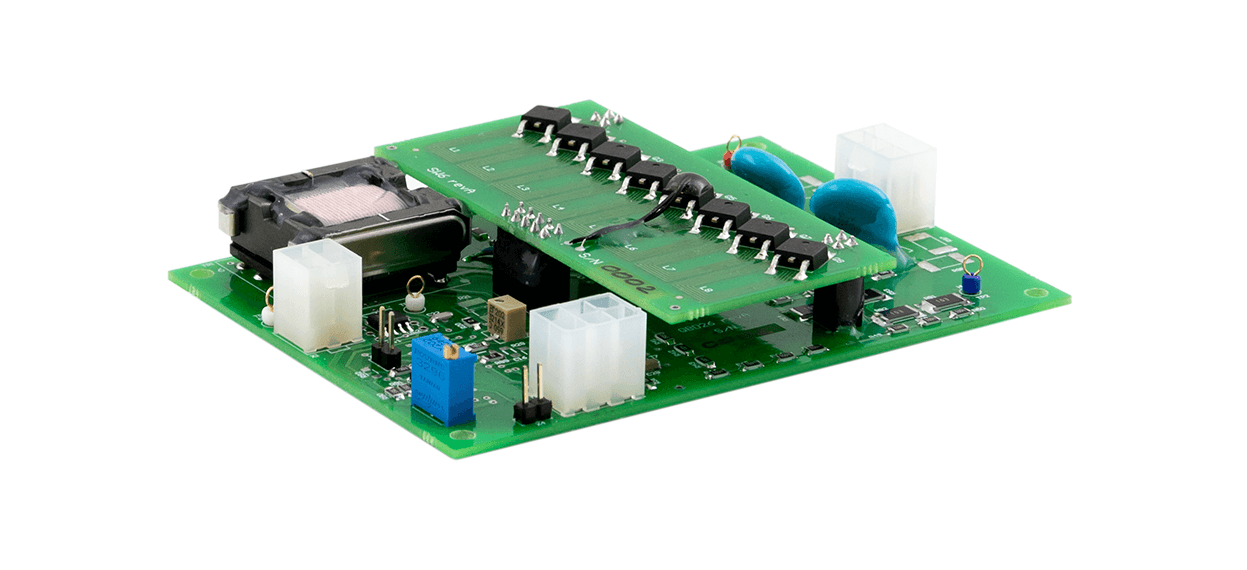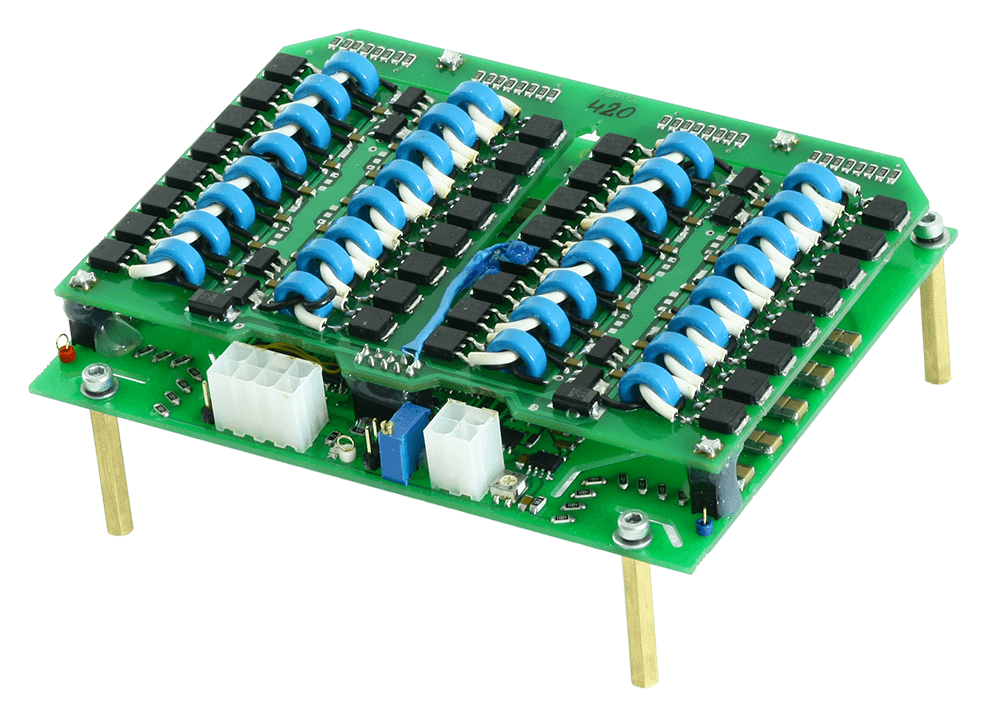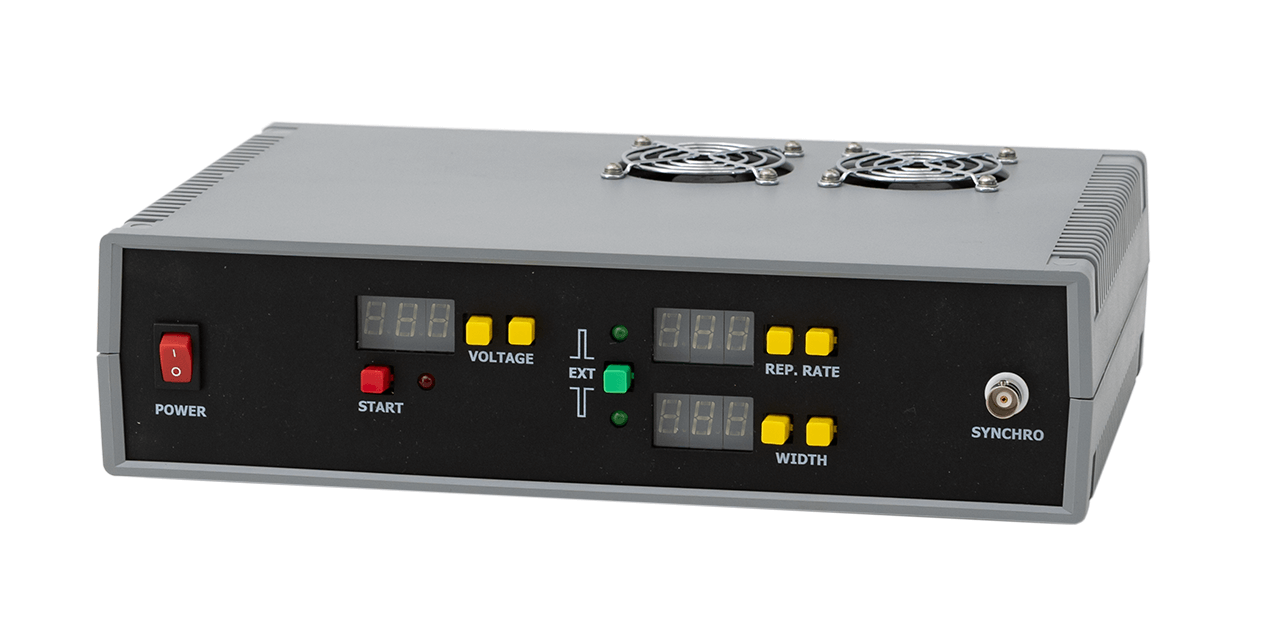-

Q-switch Driver PCD-03 Series
Generation of quasi-rectangular High Voltage Pulses for the control of Electro-Optical Q-switches (Pockels Cells) in a Solid-State Laser.
Distinctive Features
- High-Voltage Pulse is formed by a symmetrical, bi-polar output in «Switch-on» Operational mode;
- Low-voltage DC supply required (12V+/-10%);
- Built-in, pulsed HV-Source;
-

Q-switch Driver PCD-04
Generation of quasi-rectangular, High-Voltage Pulses for the control of E-O Q-switches (Pockels Cells) in a Solid-State Laser.
Driver can be used for ultrafast optical beam modulation and deflection, control of laser regenerative amplifiers and pulse pickers.
Distinctive Features
- High-Voltage Pulse is formed by a symmetrical, bi-polar output in «Switch-on» Operational mode;
- HV amplitude up to 6kV;
- Nanosecond rise and fall times;
- Controlled pulse duration;
- Pulse jitter is less than 500 psec;
- Built-in pulsed high voltage source;
- Pulse amplitude adjustment by trimmer or external analog signal;
- Trigger pulse 5 V, impedance 50 Ω;
- Pulse repetition rate up to 1000 Hz;
- Excellent pulse-to-pulse stability.
-

Q-switch Driver PCDA4-01
Generation of quasi-rectangular High Voltage Pulses for the control of Electro-Optical Q-switches (Pockels Cells) in a Solid-State Laser.
Distinctive Feature
- Positive High-Voltage Pulse – «Switch-on» Operational mode;
- Low-voltage DC supply required (5 ÷ 12V);
- Built-in, pulsed HV-Source;
- Adjustment of a high-voltage pulse either directly on the board (through built-in potentiometer) or remotely;
- TTL input signal required (5-12V);
- Highly reliable topology;
- Ultra-compact size – can be used for actively Q-switched, hand-held Q-switched laser heads.
- Low-Jitter.
-

Q-switch Driver PCDA4-02
Generation of quasi-rectangular High Voltage Pulses for the control of Electro-Optical Q-switches (Pockels Cells) in a Solid-State Laser.
Distinctive Features
- High-Voltage Pulse is formed by a symmetrical, bi-polar output in «Switch-on» Operational mode;
- Low-voltage DC supply required (5÷7V);
- Built-in, pulsed HV-Source;
- Adjustment of a high-voltage pulse either directly on the board (through built-in potentiometer) or remotely;
- Significantly reduced electro-magnetic noise;
- TTL input signal required (3÷12V).
- Highly reliable topology;
- Ultra-compact size – can be used for actively Q-switched, hand-held laser heads.
-

QBD-BT-series Pockels Cell Drivers
QBD-BT-series is a series of bench-top (table-top) Pockels Cell Drivers, designed for the laboratory use and based on OEM PC drivers of the QBD-series. Key parameters and features:
- Push-up or pull-down modifications
- Up to 6 kV output voltage
- Up to 100 kHz and higher repetition rate
- < 20 ns rise- and fall-times
-

QBD-mini Pockels cell drivers
QBD-mini is the subcompact driver in the QBD-series. Its distinctive features are:
- Compact (as small as 90x50x20 mm)
- Push-up or pull-down modifications
- Up to 4.0 kV output voltage
- Up to 50-100 kHz repetition rate (depending on voltage)
- < 20 nsec rise time or < 20 nsec fall time
-

QBD-nano avalanche transistor Pockels cell driver
Applications
- Cavity dumping
- Q-switching
Features
- Compactness (40x30x10 mm)
- Bipolar output
- Up to 5 kV output voltage
- Up to 10 kHz repetition rate
- 1-3 ns rise time
-

QBD-series Pockels Cell Drivers
QBD-series is a line of quite simple, compact and inexpensive Pockels Cell Drivers.
Features:
- Push-up or pull-down modifications
- Up to 6 kV output voltage
- Up to 100 kHz repetition rate
- < 20 nsec rise time or < 20 nsec fall time
-

QBU-10kV Pockels Cell Drivers
QBU-10kV is an extension of QBU-series with up to 10kV operating voltage range. Its parameters and distinctive features are:
- Duplicates at its HV output the external driving TTL signal;
- Up to 10kV output voltage;
- Up to 5 kHz @10 kV pulse repetition rate, much higher performance at lower voltages.
- <20 nsec rise- and <25 nsec fall-time
-

QBU-BT-10 kV Pockels Cell Drivers
QBU-BT-10kV is a bench-top (table-top) Pockels cell driver designed for the laboratory usage and based on OEM Pockels cell driver QBU-10kV. Key parameters/features are:
- Extremely flexible topology;
- Push-up scheme, pull-down scheme, mixed or user-defined in one module (duplicates at its HV output the external driving TTL signal);
- Up to 10 kV output voltage;
- Up to 5 kHz repetition rate at maximal voltage, up to 50 kHz at lower voltages;
- < 20 nsec rise/fall time;
- Perfectly suitable for the laboratory purposes.
Menu
- 203.829.5756
- [javascript protected email address]

